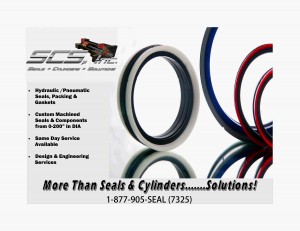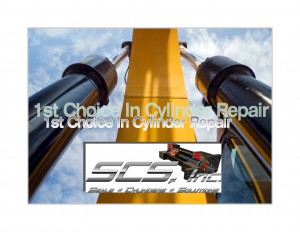PTFE Seals Boost Performance, Resist Process Fluids and Temperatures
Consider seal force, temperature, and fluid resistance requirements early in the design process for more-reliably sealed parts.

Call Us Today!
| Authored by: Lee Chaplin Engineered Plastics Product ManagerJulian Webb Global Product Manager for Sealing
Hans Wallin Global Compressor Segment Manager SKF USA Inc. Kulpsville, Pa. Edited by Jessica Shapiro [email protected] Key points: • Engineers should include seals in their design process instead of assuming a suitable off-the-shelf seal is available. Advanced seals meet elevated temperatures, spiking pressures, and other challenging requirements. • PTFE seals are not attacked by process fluids, withstand high temperatures, and resist wear.
|

As rotating machines face more-demanding life, speed, temperature, and pressure requirements than ever before, standard seals made from conventional materials find it hard to keep up. Potentially damaging process fluids and gases further challenge seals. The result: high premature-failure rates in seals, machine breakdown, and escalating repair and warranty costs.
Conventional seals made primarily from elastomers are mainly found in vehicles but also work in rotating machinery like pumps, gearboxes, and hydraulic motors. Although they are reliable in most applications, problems arise when conditions get tough.
As a result, design engineers are turning increasingly to advanced sealing designs and materials, especially in demanding applications. These include custom-engineered polytetrafluoroethylene (PTFE) seals, which handle high speeds, temperature, and pressures.
Dynamic design Engineers often wait until after they have finished designing bearings and other rotating components to specify the seals. They assume a standard seal will fit application requirements. That assumption, however, is often no longer valid; the demanding requirements of modern applications can overwhelm standard seal capabilities.
Fully addressing sealing issues at the earliest point can reduce seal-related problems during testing and avert costly redesigns. It also lessens the risk that an inadequately sealed machine will enter production. By carefully considering operating parameters and their effects on seals, engineers can decide whether or not conventional products will suffice.
First look at dynamics, friction, and torque. Dynamics may include speed, eccentricity, and the frequency and conditions of start-up and shutdown.
Extreme heat and cold can prematurely degrade seals. For example, operating temperatures over 220°F cause elastomeric seals to harden, crack, and eventually fail. In contrast, PTFE seals work between –450 and 550°F depending on application speeds, pressures, media, and other factors.
Pressure is another key consideration, and engineers should be sure to include pressure spikes that may occur at start-up or other times in their calculations. Some sealing materials, like traditional elastomers, do not handle fluctuating pressures over the long term, especially when surface speeds are high.
Component hardness, finish, and tolerances also come into play as friction and wear over time. Engineers must make sure that the seal can withstand contact with system components over its expected life. Fillers like carbon, graphite, and polyimide improve PTFE’s wear resistance.
Engineers should examine all the application parameters mentioned above to answer one question: How much contact force should a seal lip exert? The spring load in a spring-activated seal or the elastomer load in a simple seal is directly related to the required contact force.
The seal contact area and spring load are important design considerations. High spring force concentrated over a narrow contact area makes for a tight seal, but also increases the wear rate of the seal and mating hardware in dynamic applications.
Seals are subject not only to spring or elastomer loads they see at installation, but also those induced by application pressures. High pressure not only increases loads, it also deforms the seal to create a larger contact area.
All these considerations play into engineers’ choices for seal-lip interferences, lip styles, and seal materials. On PTFE lip-type seals, for example, the seal-lip inner diameter, lip thickness, seal inner case diameter, and shaft diameter all determine the seal lip’s load distribution on the shaft.
Are we compatible? Compatibility of components with the process media is a must for reliable, long-life seals. Is the media being sealed a gas, a fluid, or a semisolid lubricant? Is it abrasive? What is its viscosity? How much of the media can leak out without affecting the application or the surrounding environment?
Elastomeric seals can be unreliable in heavily contaminated process environments. They can also swell if they absorb fluid to which they are exposed.
Fluid compatibility is particularly important between seals and refrigerants. Seals can weaken when exposed to incompatible refrigerants and can fail catastrophically.
In a refrigeration compressor, refrigerant absorbed into the sealing material becomes gaseous when the pressure falls below the fluid’s boiling point. The result is immediate destruction of the seal as well as potential release of dangerous chemicals.
Unlike elastomers, PTFE compounds are chemically inert and absorb insignificant amounts of refrigerant. PTFE seals are compatible with almost all process media, including abrasives, so they are less prone to failure.
For this reason, many engineers are turning to PTFE in applications like air compressor shaft seals, internal efficiency seals in air-conditioning compressors, and oil-retention seals that maintain lubrication in refrigeration compressors.




